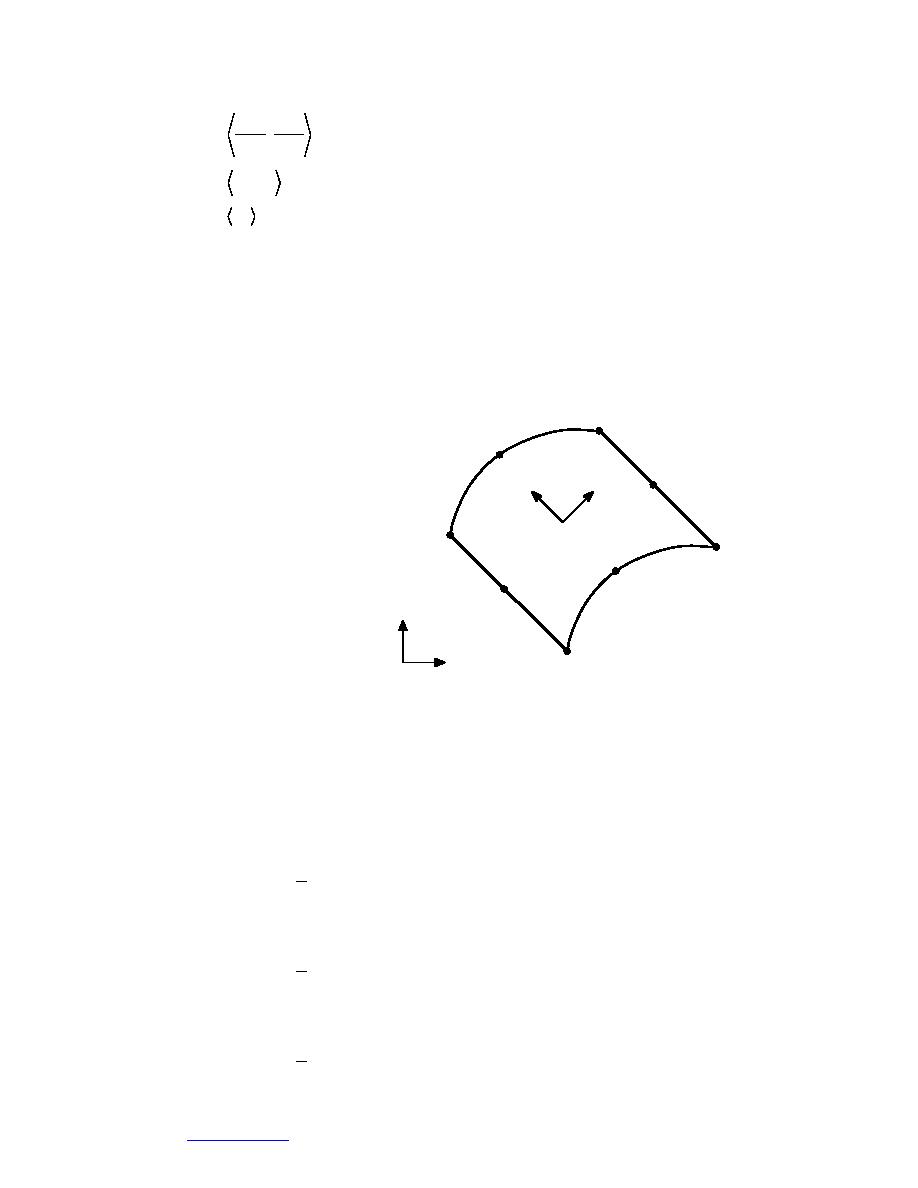
Nj
Ni
(83)
,
y
x
(84)
Ni , N j
(85)
Ni
(86)
∫s Ni ds
∫s Ni N j ds .
(87)
Interpolation functions
In the above equations, the matrix N represents interpolation functions for an
two-dimensional shape element can be used for this set of equations so long as C
continuity is maintained
5
( H u e b n e r and Thornton
6
1982). Considering that most
of the utilidor components
η
4
ξ
a re rectangular in shape
( w a l l s and insulation), it
would be convenient to use
7
rectangular elements. How-
3
ever, the presence of pipes
2
requires, at a minimum, tri-
8
angular elements to model y
these curved surfaces. Many
triangular elements will be
x
1
required to model the pipes
Figure 9. Curved isoparametric quadrilateral element.
and meld the curved areas to
rectangular areas. By using a
rectangular element, which can have curved sides, fewer elements will be required.
Ergatoudis et al. (1968) presented the interpolation functions for curved
isoparametric, quadrilateral elements. An element of this shape is shown in Fig-
ure 9; the element is defined by eight nodes, three on each side. The interpolation
functions are
for nodes 1, 3, 5, and 7
1
(1 + ξξ i ) (1 + ηηi ) (ξξi + ηηi - 1)
Ni (ξ, η) =
ξ = 1, η = 1
(88)
4
for nodes 4 and 8
(
)
1
1 + ξ2 (1 + ηηi )
Ni (ξ, η) =
ξ = 0, η = 1
(89)
2
and for nodes 2 and 6
(
)(
)
1
Ni (ξ, η) =
1 + ξξ i 1 - η2
ξ = 1, η = 0 .
(90)
2
16
Go to Contents



 Previous Page
Previous Page
